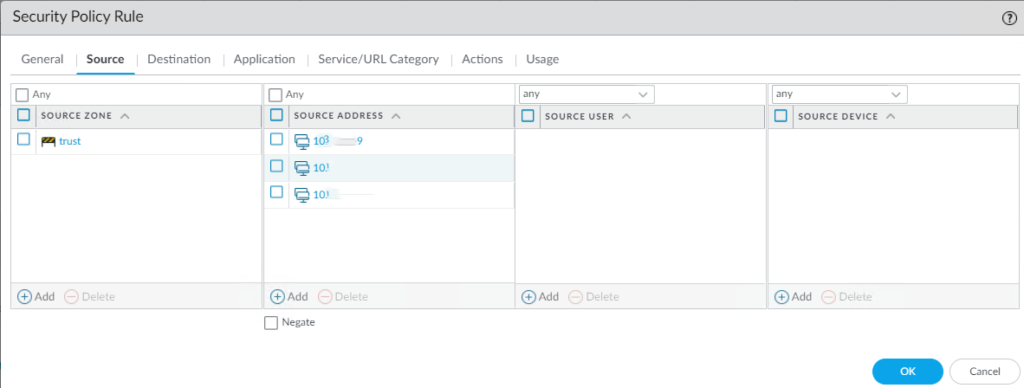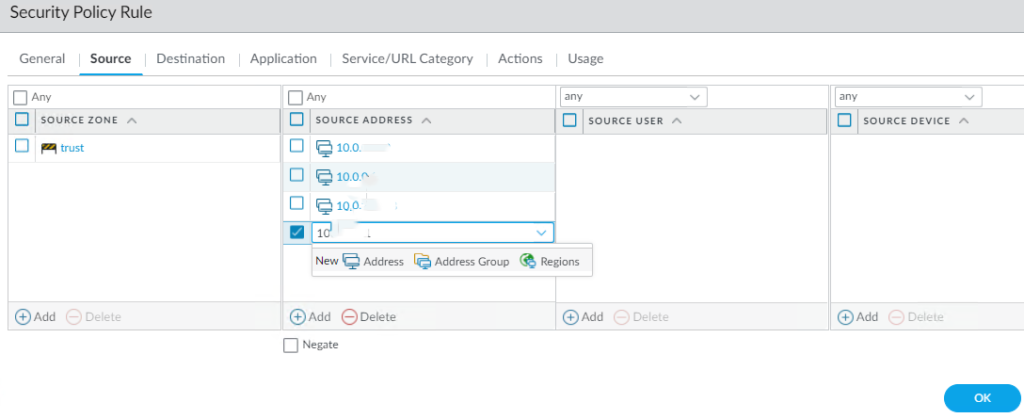Yes, you can!

Yes, you can!

set cli config-output-format set
configure
Entering configuration mode
[edit]
Situation: After registering a Paloalto Firewall on PA support website, you will have an option to generate ay 1 Configuration. Here is how.
4. Enter all information you want to configure your firewall. Here are the example.
PAN-OS Version: 10.2.0
Hostname: PA440

Management Type: Static
IPV4: 192.168.10.8
Subnet Mask: 255.255.255.0
Default Gateway: 192.168.10.1
Primary DNS: 8.8.8.8
Secondary DNS: 4.2.2.2

Logging

5. Click on Generate Config File.

6. Palo Alto Networks will send the email with the configuration to you soon.

Situation: In some cases, you may want a department manager to manage their distribution list. You can assign ownership to the manager to manage the list such as adding or deleting members. Here is how.
Option 1: Use ADUC

2. Right click on the Distribution List you want to assign to the user and select Properties.

3. Click on Managed by.

4. In Name, enter the user account and then check Manager can update membership list.

5. Click on Security

6. Highlight the user account and check Full control to assign full permissions.

7. Click OK to save the settings.
Option 2: Use Microsoft 365

2. Click on Exchange under Admin centers

3. Click on Groups

4. Click on Distribution List

5. Open the Distribution List you want to change and then click on Members.

6. Add the Owner here.

7. You will see the owner listed.

Please view this step by step video:

3. Click Add in the bottom left corner.

4. Enter the interface a name, enable the services such as HTTPS, SSH.

5. To restrike which IP addresses can access the firewall, click ADD under Permitted Services. Ener the IP addresses you allow to access to the Firewall from outside.

6. Click OK and commit to save the configuration.

Please view this step by step video:
Situation: To manage Paloalto Firewall, you need to assign Management IP address. And you may want to limit which device or IP can access it. Here is how.

3. Click on the Interface name, Management in out example.

4. Enter IP information in IP Type. And check which services we want to enable.

5. If you want to limit which devices or IP addresses can access the Firewall, click Add in PERMITTED IP ADDRESSES.

6. Click on OK to save the settings and then Commit.
Please view this step by step video:
Situation: When running configure in a new Cisco switch, we can read enable password. The client wants to know how to hide it.
Resolution: Enable and run this command:
service password-encryption

Situation: To allow outbound on AL Firewall, you need to add sources in a policy. Here is how.

2. Open the Policy, and go to Source

3. Click Add and enter the source IP address.

4. Click OK to save and commit.

3. Click on Add under RESERVATION ADDRESS

4. Enter the IP Address

5. Click on MAC Address and enter it. And perhaps, DESCRIPTION.

6. You should see Reservation IP Addresses and Mac Addresses. Remember to commit.

Please view this step by step video:
Please view this step by step video:
Situation: After you join TP-Link Wireless AP to Omada Controller, you may not be able to manage the AP settings directly. You have to manage it from Omada Controller. Here is how.

3. Click on Wireless Networks

4. Click on Edit icon under ACTION.

5. Here, you change the SSID, password, Enable Guset Network and more such as Advanced Settings, WLAN Schedule. Click Apply to save the settings.
